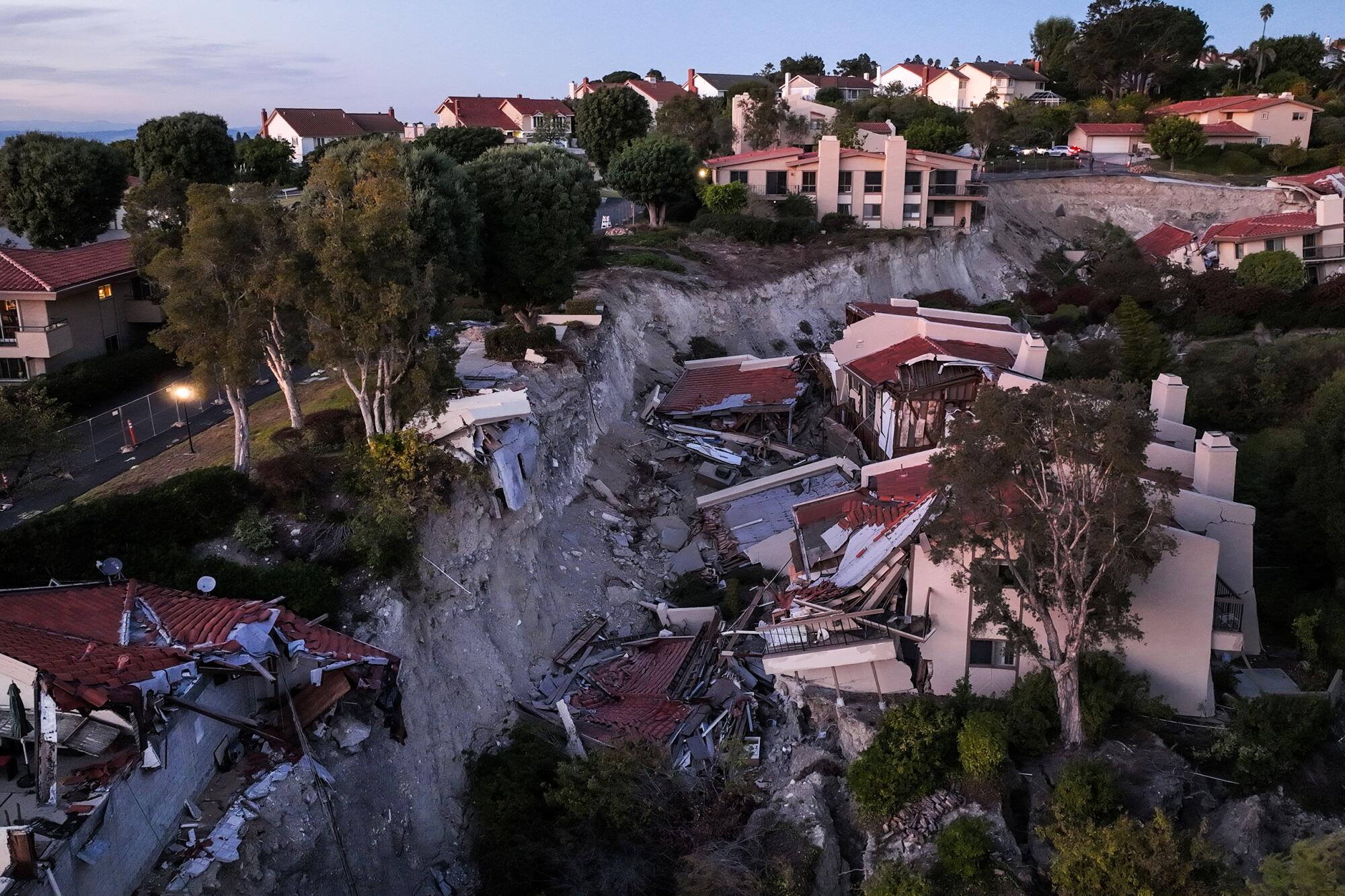
Sepideh Razipour and her husband never thought they could afford to be homeowners, but when their Rolling Hills Estates rental went up for sale, they scrambled to make the townhouse their own, pulling together savings and borrowing from extended family.
But before they made their first mortgage payment, a massive landslide upended life on Peartree Lane, pulling eight neighborsâ homes down a nearby canyon and pushing others into different levels of structural purgatory. Razipourâs home survived unscathed, but the land movement damaged crucial sewer lines, which left her unit unlivable.
Now, almost five months later, utility repairs are stalled as officials worry about potential ground shifts, leaving Razipourâs family of four stuck in temporary housing.
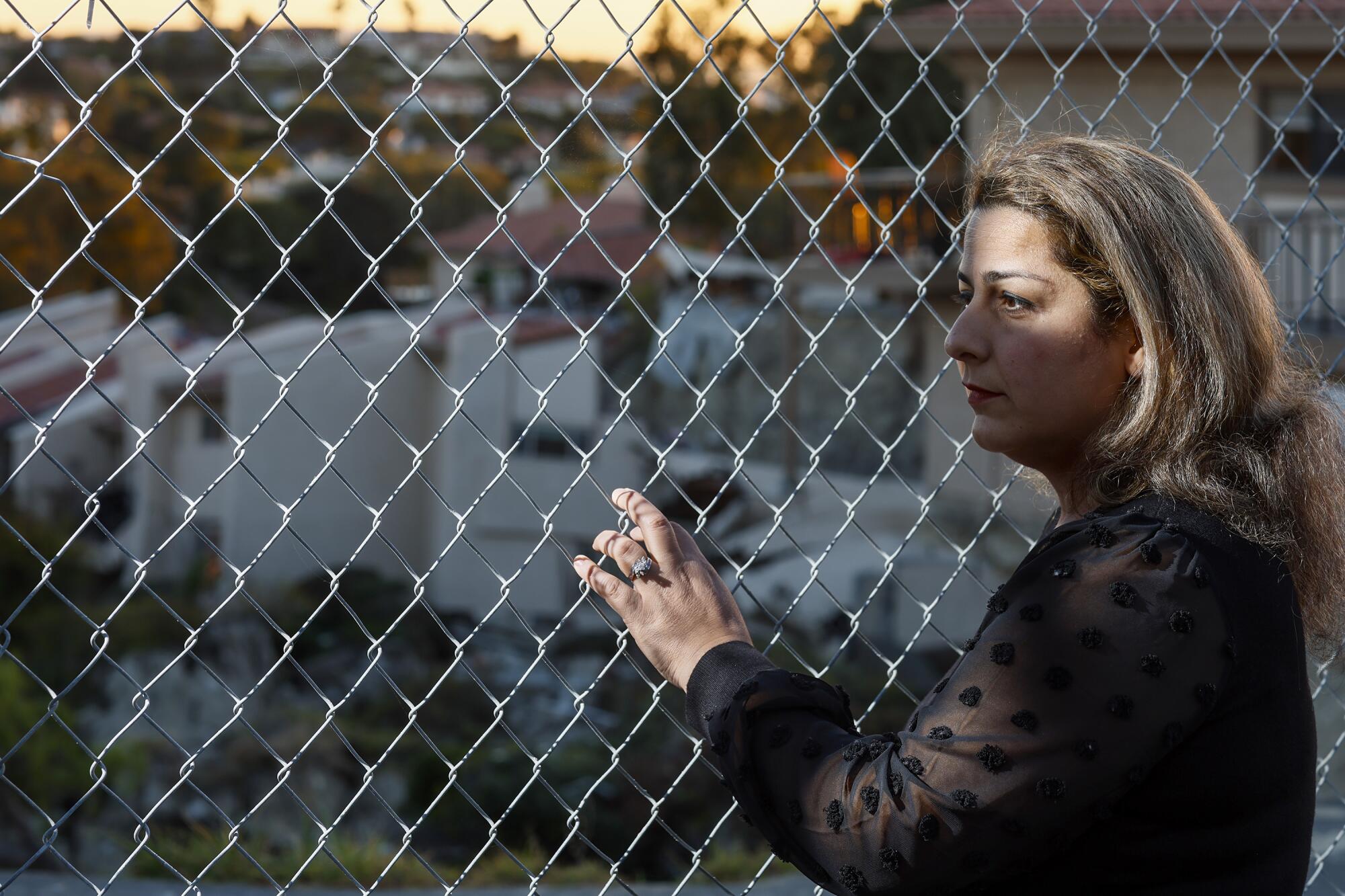
âWhat are the chances of buying a home and not being able to live in it after a week? It was just a week,â Razipour said. âItâs affecting every aspect of our lives.â
She remains hopeful they can soon return, but concerns about a rainy winter and her streetâs long-term stability loom large â even as work to shore up the slope finally begins.
âIâm worried, but hopefully ... theyâll do the winterization before the heavy rain starts,â Razipour said. âItâs been really hard.â
The city of Rolling Hills Estates reported that last winterâs excessive rains caused Julyâs devastating landslide, although the findings were preliminary and at least two independent analyses are ongoing.
But residents worry that heavy rainfall could overwhelm the still unstable ground, threatening even more homes or creating new issues across the landslide-prone Palos Verdes Peninsula.
âA part of our hillside is missing, so whoâs to say during the rainy season if thereâs more instability,â said David Zee, who also bought his house months before the slide.
Zeeâs house is one of four deemed structurally unsafe but not destroyed, although it now sits on the precipice of the failed slope. Eight other homes collapsed with the hillside, and five more â including Razipourâs â remain yellow-tagged and vacant because of sewer damage.
âEverybodyâs worried that more of the hill can come down,â said Steve Blum, an attorney who specializes in landslide litigation and is representing some of the residents on Peartree Lane. âThere could definitely be expansion of the slide to affect other properties.â
A report prepared for Rolling Hills Estates says excessive rainfall caused the landslide in July that destroyed eight homes, but some residents are skeptical of the cityâs findings.
Meteorologists say the chances are high for an El NiĂąo weather pattern this winter, which could bring increased rainfall across much of the Southwest. That raises the likelihood of land movement disasters, including slides, experts warn.
The threat is especially evident on the Palos Verdes Peninsula, where two other homes were recently red-tagged â both in Rancho Palos Verdesâ Seaview neighborhood â after residents found cracks and other structural damage. The homes are not far from Portuguese Bend, where the peninsulaâs most dramatic landslide complex covers 240 acres. Officials say its movement has accelerated in recent months.
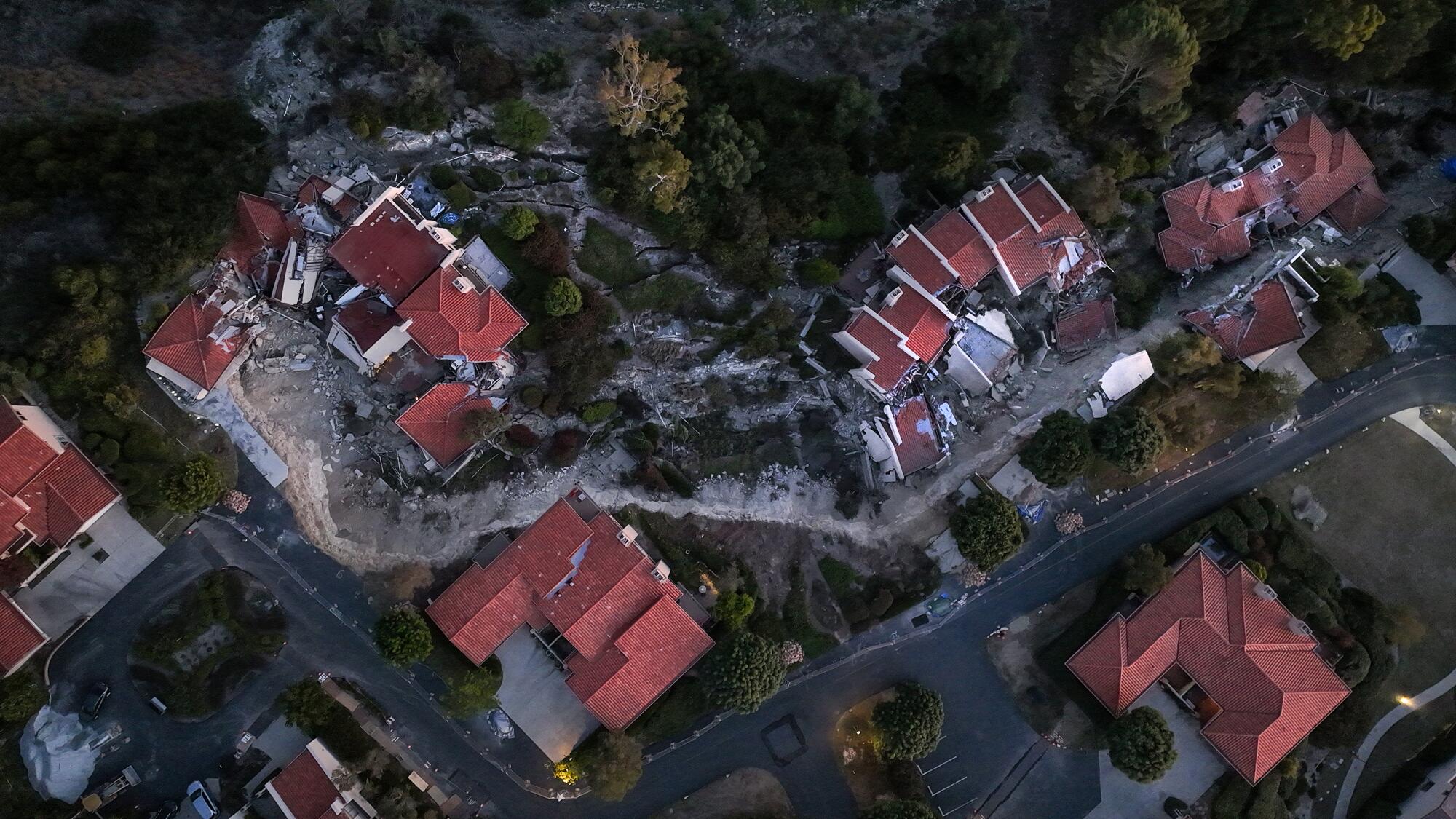
El Hachemi Bouali, an assistant professor of geosciences at Nevada State University, said that âthe residents of Rolling Hills Estates should be cautious.â
âIf the upcoming winter rainfall events mimic last winterâs events, I would not be surprised if there is more movement on these previously failed slopes,â said Bouali, who co-authored a report on the nearby Portuguese Bend landslide complex. âLandslides tend to occur where they have before because the remaining intact slope is now less stable.â
A chain-link fence now runs along one side of Peartree Lane, blocking off the homes that were demolished or ruled unsafe and the slope that city officials say remains unstable since the July 8 collapse. The landslide moved the existing slope about 45 feet down the canyon, according to the cityâs report.
The city recently ordered the two homeowners associations in the gated Rolling Hills Park Villas community to implement winterization measures to mitigate stormwater runoff and erosion and halt further damage to the canyon, according to an October notice.
The Rolling Hills Estates landslide in July made some homes unlivable. Rancho Palos Verdes is trying to secure state and federal aid after three more slides.
City and county officials applied for disaster reimbursement from the Federal Emergency Management Agency earlier this month â a request still under review â but there has been little other public funding allocated for the landslideâs recovery and mitigation. Instead, costs for work on the slope â which is considered private property owned by the HOAs â has fallen on homeowners, with each of the almost 200 households, including those on Peartree Lane, now facing a fee of almost $24,000.
âI assumed, in the beginning, weâre a developed country ... everybodyâs going to be involved and helping out, the county, the city,â Razipour said. âBut Iâm not getting any help. ... Where do we get that money from?â
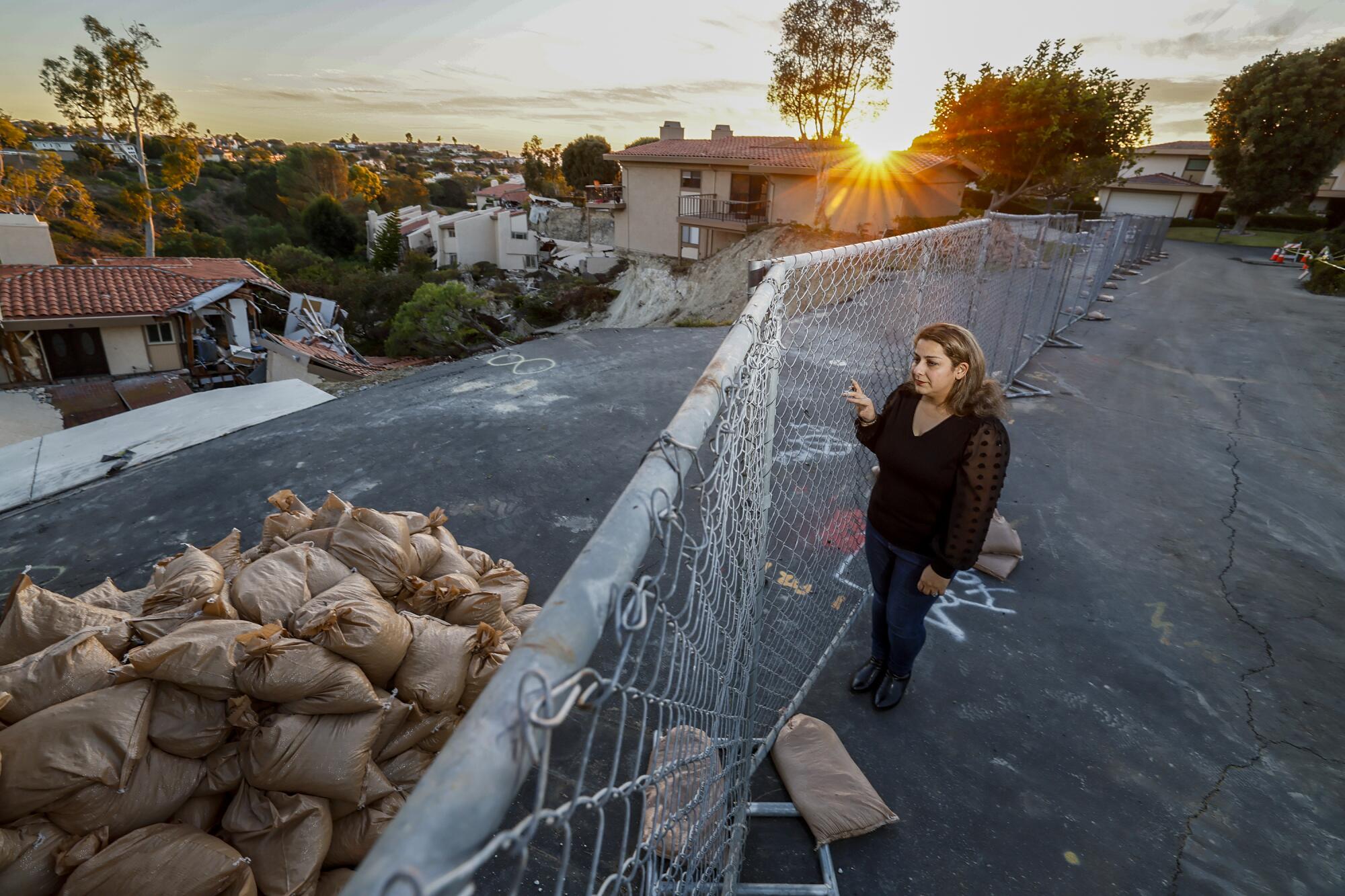
Razipour and her husband are still paying their mortgage and property taxes on a home they cannot occupy, a growing challenge with added costs from temporary housing. She has no idea how theyâll afford the three $8,000 installments to the HOAs beginning in January â their share of the $4.3-million combined work for geotechnical assessments, winterization construction and long-term stabilization efforts.
Rolling Hills Estates spokesperson Alexa Davis said that after the city declared an emergency this summer, the city and county allocated a sum of $125,000 to help residents with temporary housing and small incidentals, such as groceries; however, all but $20,000 of that pot has been spent. The city has not received any other emergency financial assistance, Davis said.
She said the city is working with Supervisor Janice Hahnâs office on a program to offer the HOAs loans for repair work. But like the FEMA funds, that remains a work in progress.
It could be up to two months before geological experts evaluating the Rolling Hills Estates landslide have any preliminary answers.
The HOAsâ winterization work includes sealing fissures along the slope, using sandbags and plastic sheeting to minimize runoff and installing a drainage pipe at the bottom of the canyon, according to an HOA presentation reviewed by The Times. The cityâs order repeatedly notes that âworkers should not be allowed near any portion of the headscarpâ near the top of the landslide as the area remains unstable.
âWithout these winterization measures, it is anticipated that large amounts of soil and debris will be eroded from the landslide,â the cityâs community development director wrote to the homeowners associations. âThat erosion will remove support from the landslide and contribute to its further movement,â which could directly threaten areas to the west and north of the landslide â where homes are still standing.
âThe failure to timely implement the measures described above and secure the landslide area from further erosion, degradation and damage may result in the city seeking legal authority to perform the work itself,â the order said. The estimated completion is mid-January, with plans for long-term stabilization to begin after.
A representative from both homeowners associations, as well as the HOAsâ management company, did not respond to questions from The Times.
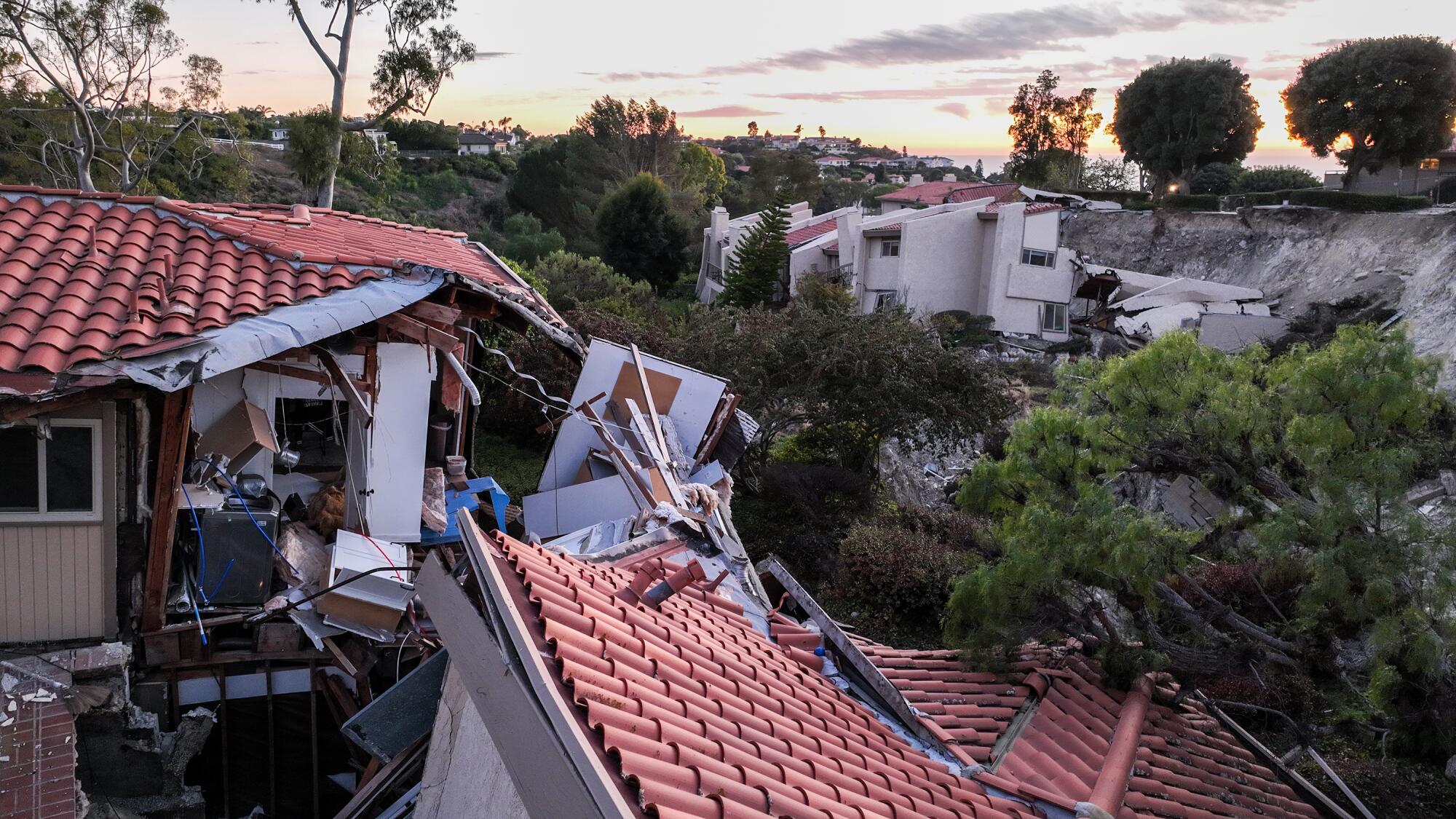
This is not the first time Rolling Hills Park Villas residents have raised concerns about shifting ground or the potential for problems from excessive water. At least one homeowner found cracks in their house during the neighborhoodâs development, and others reported drainage issues, according to records from the 1970s and â80s.
Additional building records for the community, obtained from the county by The Times, also revealed other landslide issues over the last few decades â at least one of which occurred on Peartree Lane, though in a different location from this summerâs slide. However, geotechnical and geologic experts said the historical records do not necessarily pinpoint issues that could be linked to the recent Peartree Lane landslide.
In 1986, a resident at 21 Peartree Lane â just west of the July slide â commissioned a geotechnical investigation after finding âcracks in the walls, tilted floors, floor cracks and separation of the patio from the townhome,â according to the report at the time.
The investigation found that multiple areas of the townhome had settled about 1 inch and noted significant concerns about the steepness of the slope. The minor land movement was found to have been caused by relatively weak soil and an âoversteepened slope angle,â engineers at the time found.
âThe generally weak condition of the soil should have precluded the construction of the steep slope,â the report said. The authors recommended mitigation steps but noted that completely eliminating slope stability issues would probably be too costly.
âIt should be recognized that even though the structure condition can be improved, unless the slope is treated as well, a substandard condition will exist at the site,â according to the report, which recommended deeper foundations, better drainage and detaching the patio from the homeâs foundation.
Just the roof of Weber âWeiâ Yenâs home is visible from his street in Rolling Hills Estates. He worries over the mementos he may never get back.
âIf built today, the slopes would likely be flatter and foundations would likely be somewhat heavier,â the 1986 report found, calling it a âconstruction defectâ that the topsoil was left in place below the fill and that the home was built on such a steep slope.
It wasnât clear from the historical records what actions were taken at the time. Attempts to contact prior and current homeowners were unsuccessful.
In 1992, one of the HOAs hired a geotechnical firm for a âproposed slope repairâ east of Hawthorne Boulevard â down the hill from where multiple homes currently stand â after a âlocal slope failure.â No home damage was reported, but the land movement had âundermined a paved terrace swale,â the report said. During repairs, engineers found that nearby drainage pipes had been clogged and âcaused the water to flow out of the terrace drain onto the slope in a concentrated manner,â causing the slope failure, the report said.
However, work at that site was also characterized as âremedial in nature,â and the 1992 report also noted that âthe possibility of additional failures occurring on the site at the same location or at other locations cannot be ruled out.â
Amy Rechenmacher, an engineering practice professor at USC who visited Peartree Lane after the landslide, reviewed the countyâs historical records and found the reports âextremely alarming.â She was particularly concerned by data on the slopeâs incline from the 1986 Peartree Lane report, which she said should have triggered more stringent building requirements.
âYouâre basically flirting with disaster,â she said of the steep slope. She questioned the homesâ construction, given their location near a streambed and known geologic weakness in the area.
âWhy werenât these houses on deep foundations?â she said.
Rolling Hills Estates has declared a local state of emergency in the wake of a landslide that sent multiple hillside houses on a slow-motion downward slide.
But Blum, the attorney representing Peartree Lane residents, said the historical reports arenât necessarily a smoking gun for the July slide.
Construction defects âmight be factors, but there are other factors too â including, as the city said, the rain, and possibly including some man-made devices,â Blum said. âWeâre looking at a lot of different possibilities.â
He wouldnât elaborate and declined to comment further on what he thought caused the July landslide, citing a likely lawsuit. He said his team has hired its own geotechnical firm to review the incident.
In the Peartree Lane stabilization plan, the HOAs say they plan to improve slope safety with long-term remedies, which include securing 45-foot-deep caissons â boxlike structures often used in foundations â into the slope, as well as building a short concrete wall.
In addition to fixes on Peartree Lane, Rechenmacher said she would like the county or state â or even the nation â to better research landslide-prone areas and inform residents about the risks. She used as an example the national forecasting and warning service for rainfall-induced landslides implemented by Norway in 2013.
âWhy hasnât there been a massive effort in the county of Los Angeles ... to look at all landslide-prone areas and warn homeowners?â she said.
The U.S. Geological Survey has recommendations for preparing for landslides, but Nevada Stateâs Bouali said sometimes thereâs little people can do. The professor recommended that those living in areas susceptible to slides take some precautions, such as limiting excess water seeping into the ground, checking for leaking pipes and reducing irrigation.
But for Jooyun Lee and her family â who have been living in hotels and Airbnbs since their townhome on Peartree Lane was yellow-tagged â theyâre stuck in limbo. She returns often to check on her property, and has been glad to see thereâs always work being done â by geologists, engineers or utility teams. Sheâs hopeful they can return home soon after repairs are completed.
âHopefully February or March, but I donât know and [city officials] donât know either. So Iâm just waiting, my family is waiting,â Lee said. âItâs been challenging emotionally and financially, but I look at the brighter side.â
She and her husband are facing a growing list of expenses from the landslide, including rental costs and the new HOA fees â but she is trying to focus on the fact that, thankfully, no one was hurt.
âWe want everything done quickly, but realistically, we just need patience,â she said. âOne day at a time.â
More to Read
Sign up for Essential California
The most important California stories and recommendations in your inbox every morning.
You may occasionally receive promotional content from the Los Angeles Times.
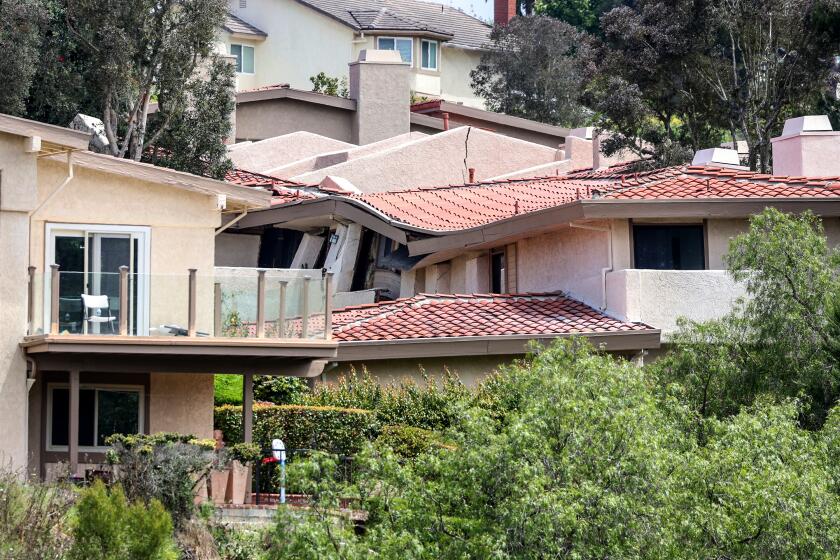
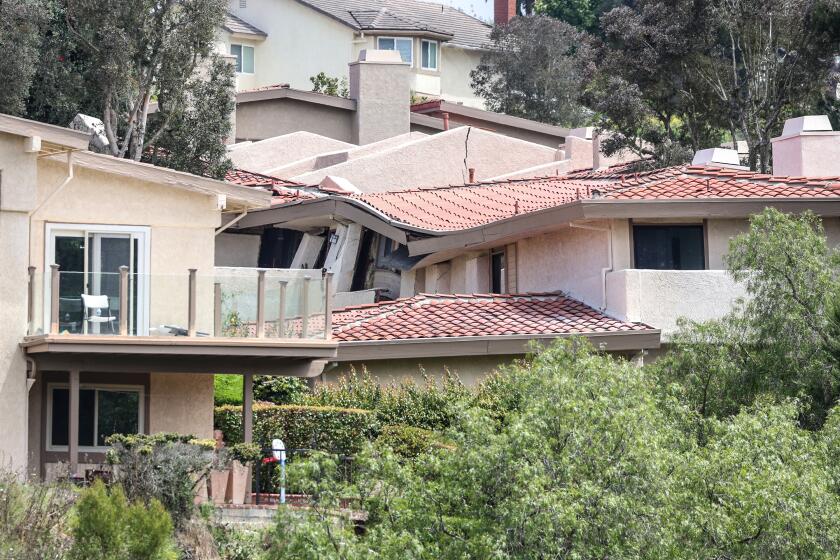
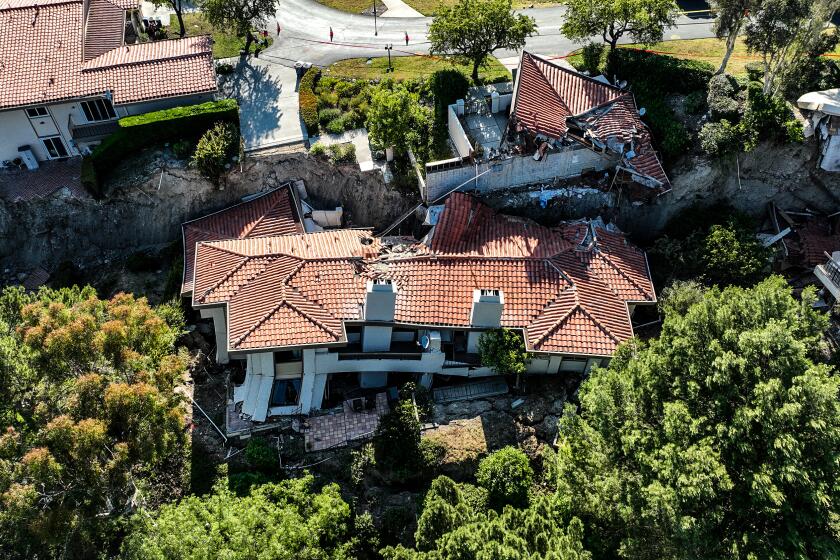
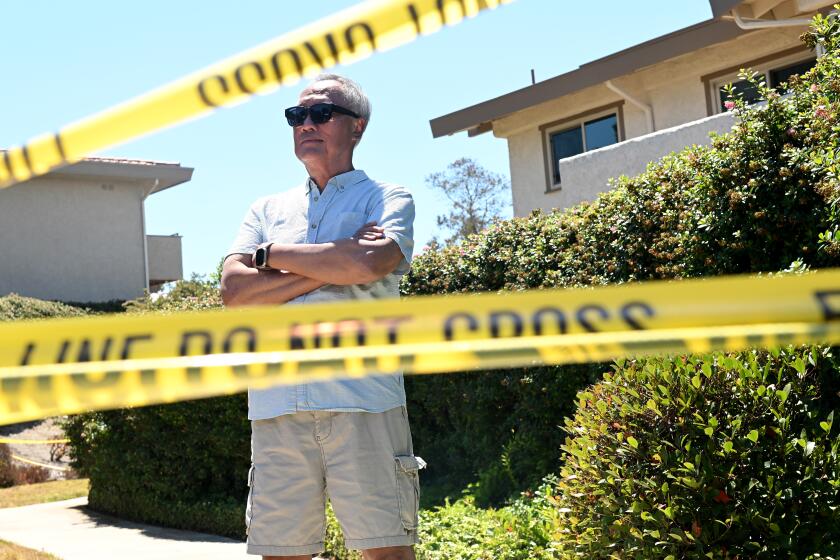
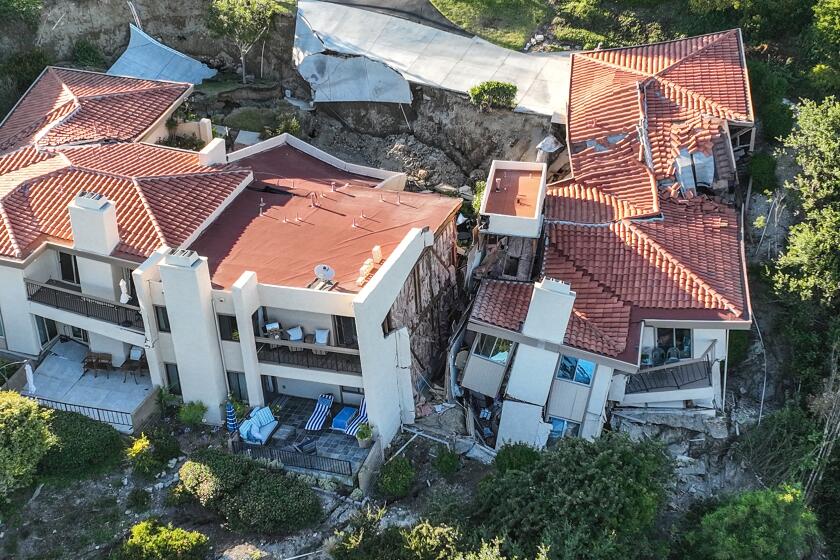









![[20060326 (LA/A20) -- STATING THE CASE: Marchers organized by unions, religious organizations and immigrants rights groups carry signs and chant in downtown L.A. "People are really upset that all the work they do, everything that they give to this nation, is ignored," said Angelica Salas of the Coalition of Humane Immigrant Rights. -- PHOTOGRAPHER: Photographs by Gina Ferazzi The Los Angeles Times] *** [Ferazzi, Gina -- - 109170.ME.0325.rights.12.GMF- Gina Ferazzi/Los Angeles Times - Thousands of protesters march to city hall in downtown Los Angeles Saturday, March 25, 2006. They are protesting against House-passed HR 4437, an anti-immigration bill that opponents say will criminalize millions of immigrant families and anyone who comes into contact with them.]](https://ca-times.brightspotcdn.com/dims4/default/34f403d/2147483647/strip/true/crop/1983x1322+109+0/resize/840x560!/quality/75/?url=https%3A%2F%2Fcalifornia-times-brightspot.s3.amazonaws.com%2Fzbk%2Fdamlat_images%2FLA%2FLA_PHOTO_ARCHIVE%2FSDOCS%2854%29%2Fkx3lslnc.JPG)

